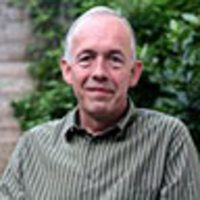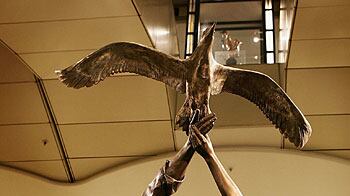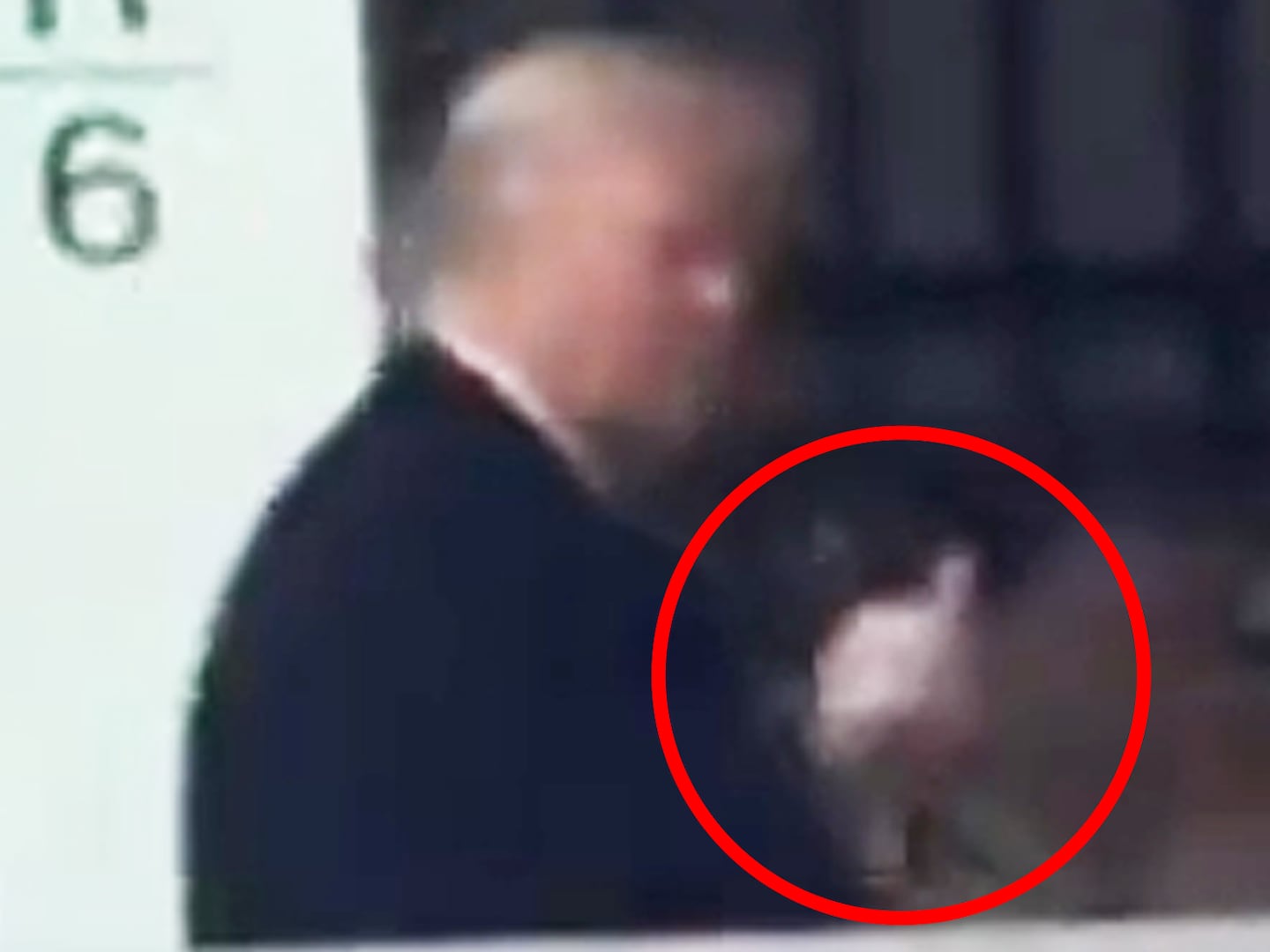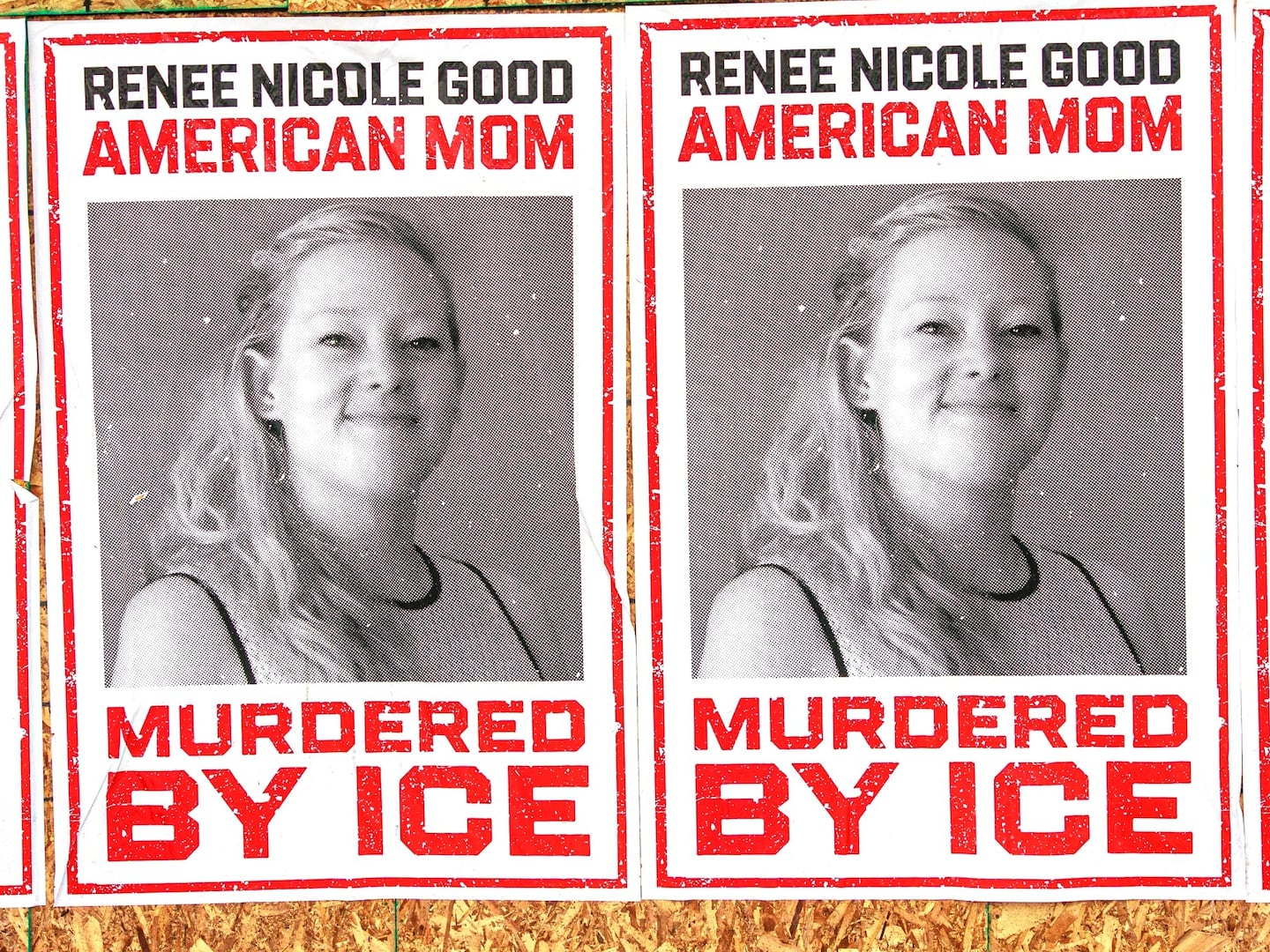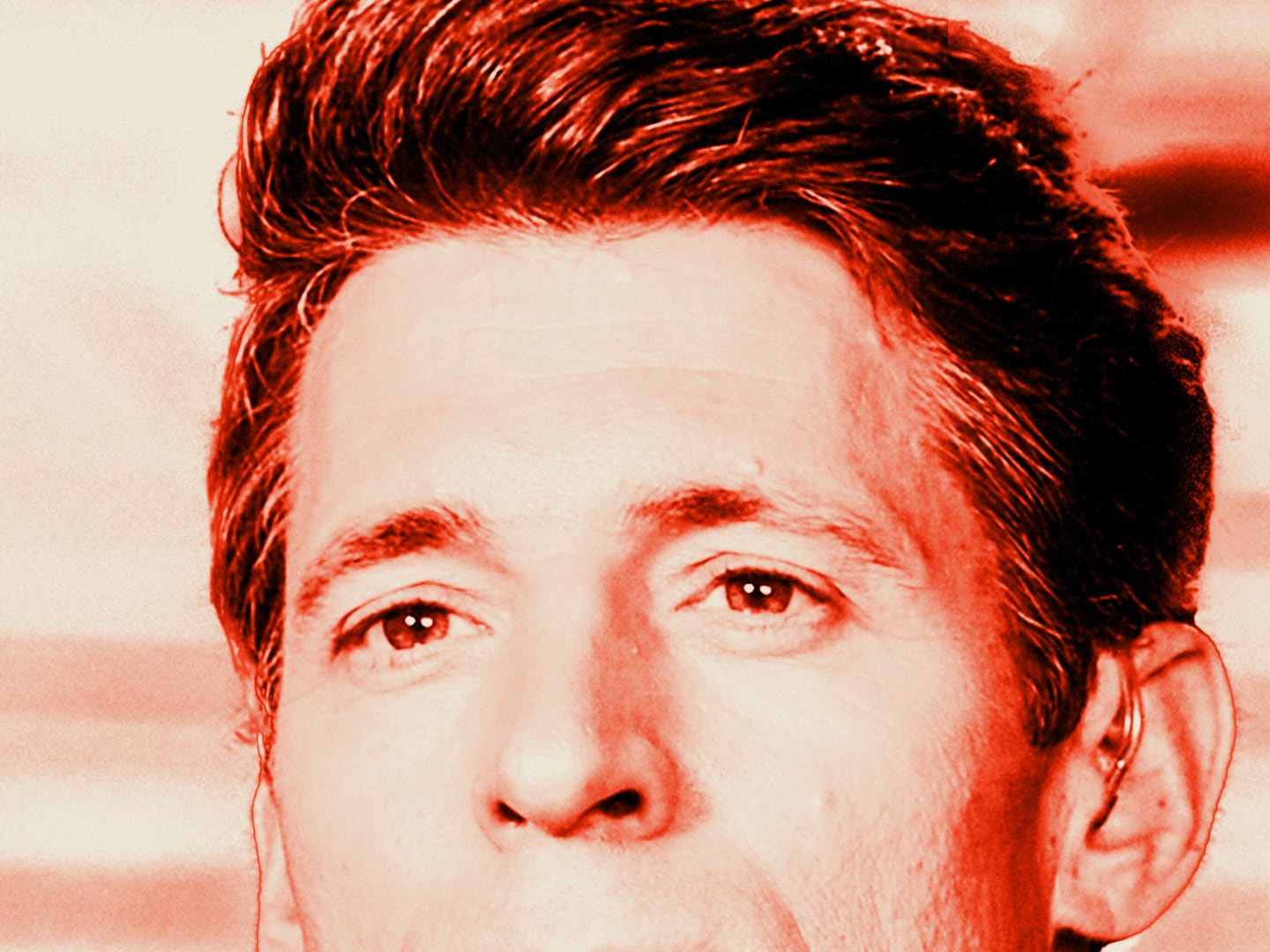
The statue “Innocent Victims,” of the late Princess Diana and Dodi Fayed, is to remain in Harrods, despite Mohamed Al-Fayed’s £1.5 billion ($2.2 billion) sale of his flagship store. How hideously appropriate that the shop’s new owner, Qatar Holding, has agreed to this.
Perhaps visitors to the lower ground floor will also continue to have the pleasure of being observed by the golden, sphinx-like statues that flank the escalator leading down to the Diana & Dodi ‘engagement’ ring display. Each sphinx sports Mohamed Fayed’s chuckling face. If they are thinking, ‘got away with it!’, who could blame the former Harrods owner? He bought the ring after the couple died and he now displays it to commemorate an ‘engagement’ that exists only in his imagination.
The Thatcher government’s Department of Trade and Industry inquiry into his controversial acquisition of Harrods in the 1980s observed that “the lies of Mohamed Fayed, and his success in gagging the press created... a new fact: that lies were the truth and the truth was a lie.” Thatcher nonetheless declined to block the Egyptian’s acquisition of Harrods.
“Innocent Victims” will continue to remind visitors of Fayed’s desperate attempts to persuade the world that somebody other than his family [was] responsible for the lovers becoming “victims.”
“Innocent Victims” will, ironically, prevent people from forgetting that had Princess Diana never visited Harrods, the Knightsbridge font of Fayed’s lies, Princes William and Harry might never have lost their mother. Harrods was where Diana’s journey to her death in a Paris underpass began.

Few visitors studying the ‘engagement ring’ will notice a black glass semi-sphere in the ceiling above their heads at the bottom of the escalator. It contains ‘security cameras’ recording every visitor. Fayed himself liked to monitor Harrods’s visitors—none more so than Princess Diana herself. According to testimony from Fayed’s 1987-1996 head of security, Bob Loftus, his entire security retinue was on red alert for Diana’s Harrods visits. Among hundreds of hours of tapes Loftus recorded were several which revealed how his master’s cameras would monitor Diana's progress around Harrods. Once the Princess was located, Fayed would beetle along & bump into her ‘by chance’. Fayed would, of course, be accompanied by his own personal-protection team which was far larger than the skeletal team of two he provided on 31 August 1997 for Diana in Paris.

“Innocent Victims” will continue to remind visitors of Fayed’s desperate attempts to persuade the world that somebody other than his family and his organization (or lack of organization) were responsible for the lovers becoming “victims.” He spent an estimated £30 million on lawyers (Michael Mansfield QC, et al.) at the 2007-08 Diana-Dodi inquests in a futile attempt to persuade the world that the couple were indeed “victims” of his fanciful “forces of darkness,” marshaled by the Duke of Edinburgh and MI6. The jury did not fall for this. It found that although Diana died unlawfully, it was as a result of being driven away at lunatic speed from Fayed’s Ritz hotel toward a Fayed apartment by Fayed’s criminally drunken driver, aka the Ritz hotel’s “head of security,” Henri Paul.
The paparazzi’s pursuit also was found to be a factor at the inquests, but there was only one family responsible for the last journey from Fayed’s Ritz. The couple’s Fayed bodyguards both testified that the plan that killed the princess had been cooked up by Dodi and approved by Mohamed in a telephone conversation minutes before the fatal journey began (“it's been OKed by MF” were the words Dodi used, the inquests were told). When Fayed denied authorizing Dodi’s plan, the DTI’s comments about Fayed’s “lies were the truth and the truth was a lie” sprang to mind.
Whatever the content of that fateful call, Diana’s fate was sealed. No one other than Paul himself had any idea that he had been boozing before he took the wheel. However, one Ritz worker told the inquests that he had seen him staggering around the Ritz before the fatal journey, unaware that Dodi had ordered him to drive. All were shocked to discover after the crash that Paul had been asked to drive at all.

In a decade of service in Ritz security, Paul had never driven Mohamed or Dodi anywhere, ever. How could he ever have been asked to drive the best-known princess in the world? Paul was not a Ritz driver. He had no chauffeur qualification to drive the Mercedes that the Fayeds pressed into service at the back of the Ritz. The chauffeur-driven cars that had brought the couple to the hotel had been surrounded by paparazzi as they awaited the couple’s departure from the front. Hence Dodi’s “plan” to leave from the rear exit.
There are dark secrets about Fayed that can never be published. They would wreck the lives of genuinely “innocent victims” for whom anonymity provides some salvation. They would explain why the Egyptian has never been granted a U.K. passport, and might even wipe the smiles off the faces of the Harrods sphinxes. I can reveal that both Labour and Conservative governments in Britain have been aware of them for decades, as have U.S. governments since the Reagan administration.
Martyn Gregory is a London based TV producer & reporter who has won Amnesty International & Royal Television Society awards for his investigative work on human rights. A leading international authority on the Paris crash following his 1998 film Diana-The Accident for Channel 4, Gregory’s book Diana The Last Days became a bestseller. Some of his TV work on Diana’s death can be found here.
